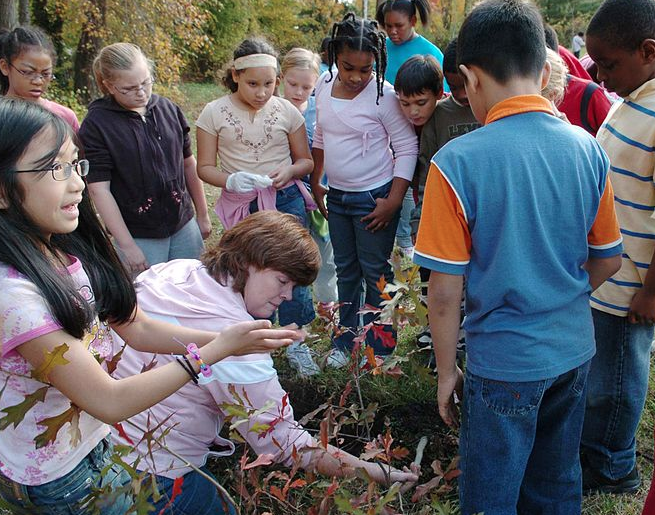Designing Nature, Balboa Park
Lesson Plan Grades 3-4
Learning Objective: Reconnect with nature in the twenty-first century.
Teachers and Students
Teachers and students are connected to the digital in the classroom every day. It is important to have the opportunity to experience nature outdoors away from the digital classroom. The early movement of City and National Parks in the United States intended on creating open places of nature in parks for people to enjoy away from city life. Being outdoors around trees and open spaces has been recognized as a key component to mental and physical health. Trees have often been labelled as the ‘lungs’ of the city, as they filter out harmful hydrocarbons and release carbon dioxide into the atmosphere. San Diego’s Balboa Park was originally created through the vision of early landscape architects as a nature escape away from the city. Over time, the landscape in the park changed to include more buildings such as museums, a zoo, and outdoor recreation areas.
People visiting the park have many ways to reconnect with nature away from the digital classroom and work atmosphere. During the month of April, students and teachers can visit Balboa Park to participate in Arbor Day by planting trees in the park. Arbor Day has been celebrated in Balboa Park since 1904, when Kate Sessions and Mary B. Coulston organized the first annual event. The celebration was held on March 7, 1904, “a school holiday was declared and 2500 school children and 4000 adults turned out to plant seeds in City Park.”[1] Arbor Day continued to be celebrated at elementary schools with children planting trees on campus each year. Kate Sessions is recognized as the “Mother of Balboa Park” for her years of dedication planting trees, and sub tropical gardens to beautify the park.
The lesson plan is created to reconnect teachers and students with nature in learning about Balboa Park history, Arbor Day, and Earth Day. After reading a book about Kate Sessions, The Tree Lady by H. Joseph Hawkns (2013), students will participate in creative writing and thinking to design their own vision of nature in a park. While the California Frameworks and Common Core Standards for this lesson align with third and fourth grade teaching, this project can be adapted for grade levels k-2 and 5-12. Children are the future leaders of our country. If kids are taught about things that harm the environment, they can better understand ways to actively participate in protecting our planet and preserving nature.
Citation:
1. Elizabeth C. MacPhail, Kate Sessions Pioneer Horticulturist (San Diego: San Diego Historical Society, 1976).

